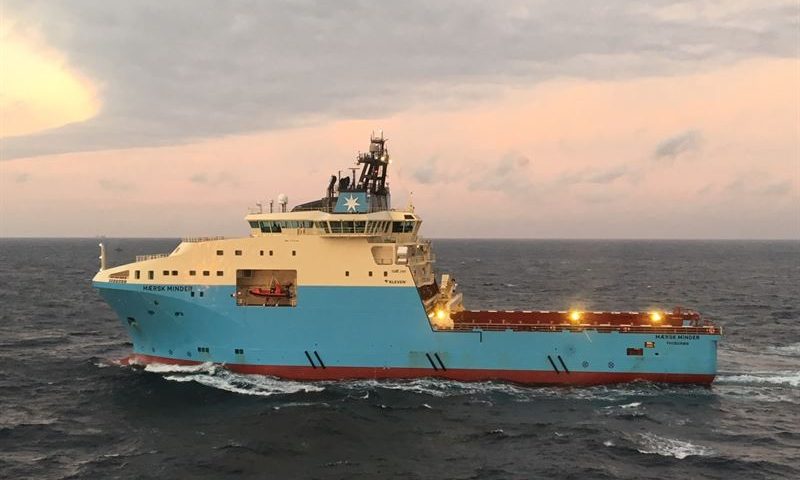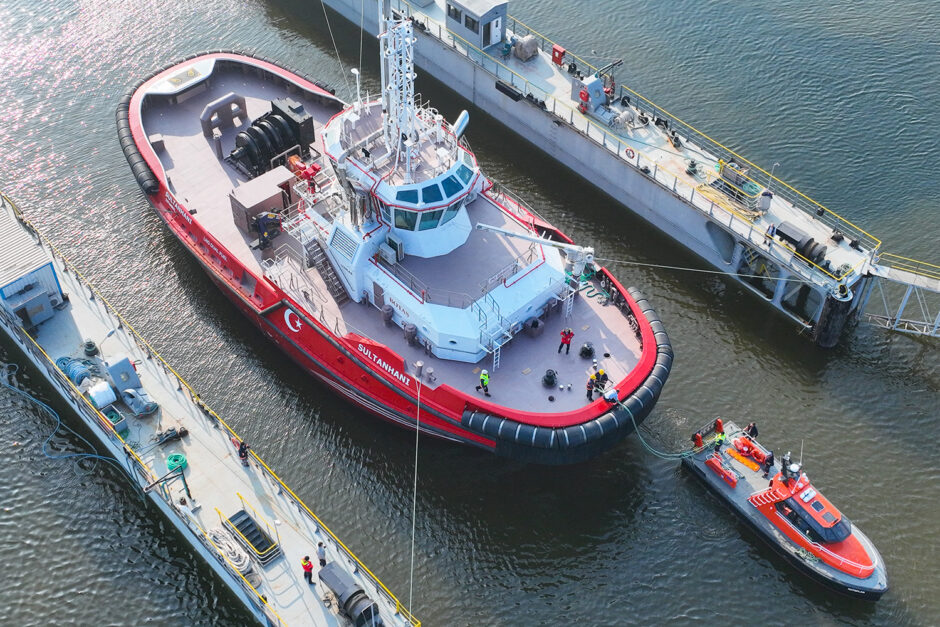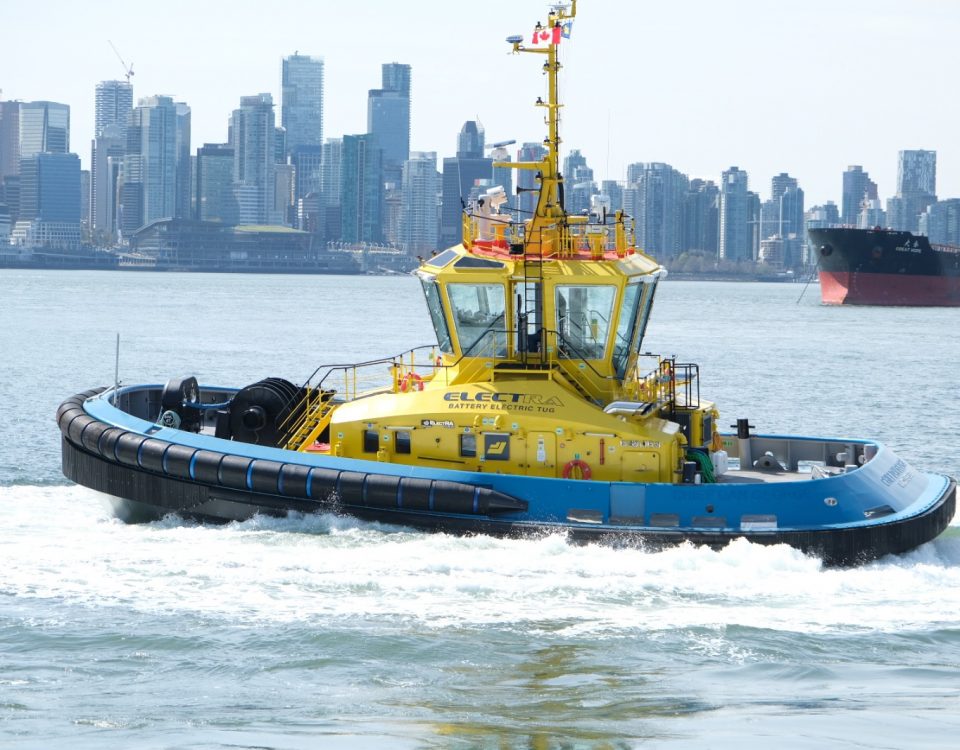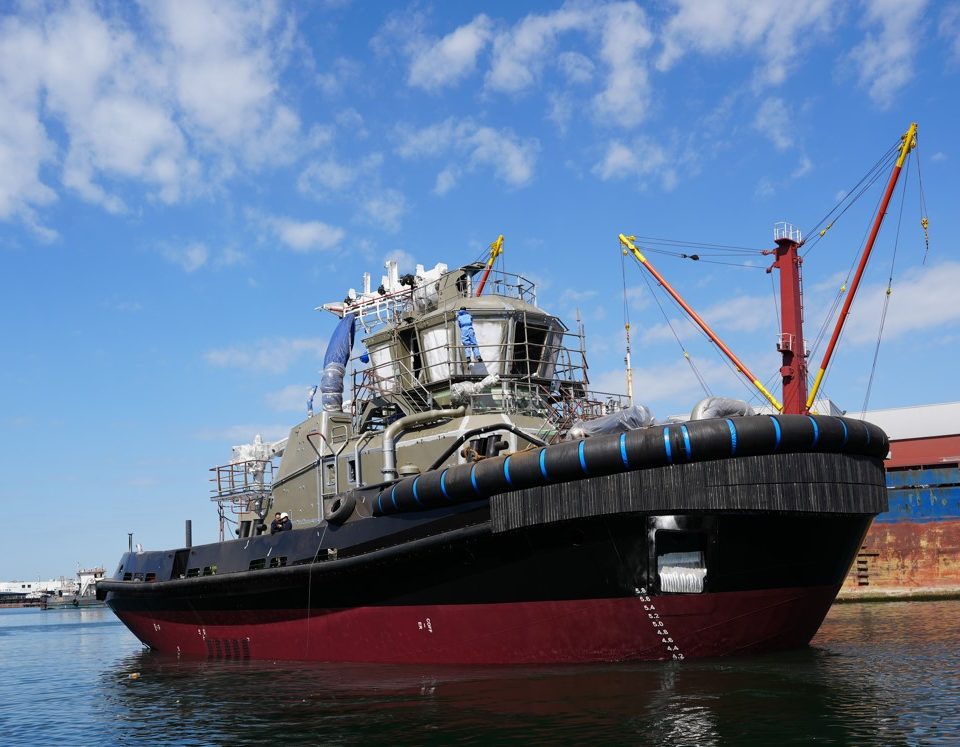This website uses cookies so that we can provide you with the best user experience possible. Cookie information is stored in your browser and performs functions such as recognising you when you return to our website and helping our team to understand which sections of the website you find most interesting and useful.
World’s first hybrid-electric anchor handler completes sea trials

ABB to power Japan’s first electric tugboat for efficient and sustainable operations
30/06/2022
Damen delivers ASD Tug 2811 TSM Odet
06/07/2022Denmark-headquartered Maersk Supply Service has revealed that one of its anchor handling tug supply (AHTS) vessels, which is believed to be the world’s first hybrid-electric anchor handler, has completed sea trials offshore Norway, following upgrades.
Maersk Supply Service has steadily been reducing its emissions since 2018 through a combination of initiatives, such as energy-efficient operations and technical upgrades. In line with this, the firm set targets to halve its carbon intensity by 2030 and reach net-zero operations by 2040.
Allan Rasmussen, Head of Decarbonisation at Maersk Supply Service, remarked: “We have a strong strategy and a dedicated team in place to achieve our goals, and are working on a number of different fronts from behavioural optimisation to biofuel to existing technological solutions. The hybrid power system comes as part of our exploration of new technologies and is an important part of our decarbonisation journey.”
Maersk Supply Service informedon Wednesday that its AHTS vessel, Maersk Minder, has “successfully completed” sea trials off the west coast of Norway, following a hybrid-electric propulsion upgrade. The company added that this vessel is now “believed to be the world’s first hybrid-electric anchor handler.”
Three upgrades for Maersk Minder
Back on 31 March 2022, the vessel docked at Fitjar Mekanisk Verksted in Norway for the installation of a battery – a container-based hybrid power system built by Wärtsila – which is expected to reduce the anchor handler’s fuel consumption, and thus carbon emissions, by 15 per cent, along with curbing the vessel’s maintenance needs and improving operational performance.
The company explained that the battery system entails an energy storage system (ESS), comprised of 132 smaller batteries, and a transformer, which is controlled and monitored via an energy management system (EMS).

According to Maersk Supply Service, one of the emissions-reducing advantages of the hybrid system is the facilitation of peak shaving, meaning the batteries can deliver extra power quickly to avoid spikes in power consumption.
The firm says that this leads to a “significant efficiency improvement,” since, the motors can run with optimal load and use the batteries to absorb a large part of the load fluctuations.
Mark Handin, COO at Maersk Supply Service, commented: “The installation of this battery system is a significant step for Maersk Supply Service and demonstrates our commitment to decarbonising our fleet. As we continue to follow an ‘every step matters’ approach, this represents an important milestone in our long-term journey towards carbon-neutral operations.”
The Denmark-based player elaborated that the battery system was not the only upgrade fitted on the AHTS Maersk Minder while it was in Fitjar, as this was ”one of three retrofits aimed at improving ocean health through decarbonisation, air pollution reduction, and protecting biodiversity.”
In line with this, a Selective Catalyst Reduction (SCR) system was fitted to the exhaust to reduce the vessel’s nitrogen oxides (NOx) emissions – produced by the ship’s combustion engine – by an average of 80 per cent. The SCR works by mixing a urea solution with the exhaust fumes, creating a reaction that removes the NOx from the flue gas stream, bringing the vessel in line with the International Maritime Organisation’s (IMO) recent Tier III emissions standards, even though they are only recommended for vessels built after 2021.
Based on Maersk Supply Service’s statement, the final “major upgrade” was the installation of a Ballast Water Treatment System (BWTS), designed to remove biological organisms from ballast water and prevent accidentally carrying and introducing aquatic invasive species into new waters.
The company pointed out that the BWTS, which was fitted to this AHTS, uses a two-step process, first filtering the ballast water through a miniscule 20µ filter, then using UV light to eradicate any remaining hitchhiking aquatic lifeforms including bacteria, microbes, small invertebrates, eggs, cysts and larvae of various species. This cleansing process fulfils another IMO requirement and is “critical to protecting marine ecosystems, by preventing the spread of invasive species that can out-compete their native counterparts.”
Upon completion of these three installations, the AHTS Maersk Minder took to the sea on 11 June 2022 to undergo six days of sea trials offshore Bergen, Norway. Maersk Supply Service disclosed that the testing period covered Wärtsila’s tuning of the battery system, Kongsberg Maritime’s DP tuning and CAT (Customer Acceptance Test), full FMEA (Failure Modes and Effects Analysis) proving trials, shore power trials, and state of health trials.
“This rigorous testing process is standard after any upgrade, but is safety-critical since it involves a systematic run down of every possible security scenario to ensure the vessel is fit for operations – and that our seafarers will be safe at sea,” added the company.
(Source: Offshore Energy)





